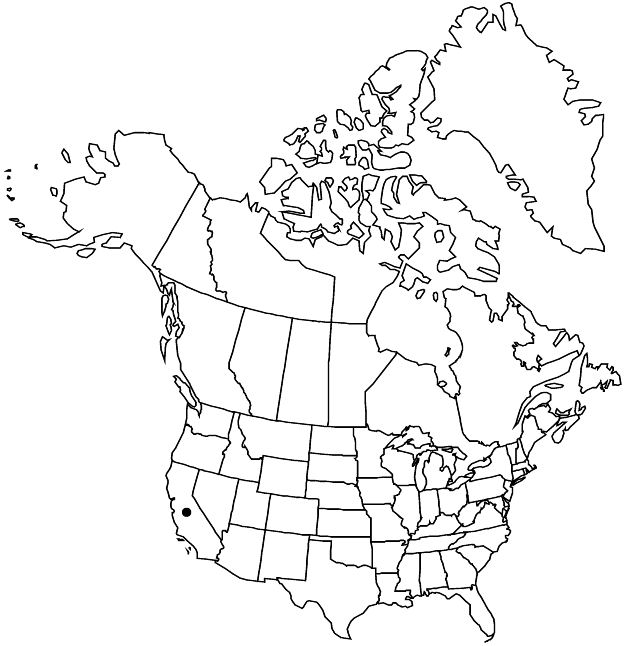Sidalcea pedata
Proc. Amer. Acad. Arts 22: 288. 1887.
Herbs, perennial, much of plant often tinted reddish purple, 0.2–0.4 m, not glaucous, with fleshy, simple to branched taproot, without rhizomelike rootstocks. Stems clustered, erect to slightly ascending, base erect to decumbent-ascending, usually unbranched, (plants nearly scapose), solid, long-bristly with hairs often 2 mm, sometimes also stellate-hairy near base, usually becoming finely hispid distally. Leaves mostly basal, cauline 1–3; stipules lanceolate, 3–5 × 1 mm; petiole 6–9 cm, basal 2 times blade length, cauline 1/2 times blade length; blade usually orbiculate, 2–5 (–6) × 2–5 (–6) cm, base cordate, apex rounded, basal deeply dissected into 3–7 primary lobes, each less deeply incised and somewhat ternate, ultimate segments linear to oblongelliptic, margins entire, distal blades repeatedly dissected with linear segments, surfaces densely hirtellous and stellate-hairy abaxially, less hairy with mostly simple hairs adaxially. Inflorescences erect or ascending, spiciform, initially dense, later open, calyces not conspicuously overlapping except sometimes in fruit, usually unbranched, usually 20+-flowered, proximal flowers remotely, evenly spaced, elongated in fruit, often 1-sided if ascending and not 1-sided when strictly erect, 15–30 (–40) cm, elongating with fruits spaced, axis often wine-red; bracts linear, usually undivided, 2.5–4 mm, usually ± equaling or longer than pedicels. Pedicels 1–2 (–3) mm; involucellar bractlets absent. Flowers bisexual or unisexual and pistillate, similar in size, plants gynodioecious; calyx usually wine-red, 4–5 (–7) mm, usually not accrescent, finely stellate-puberulent, marginal hairs longer and often simple; petals dark rose-pink, sometimes pale-veined, 7–10 (–12) mm; staminal column 3–5 mm, sparsely hairy; anthers white; stigmas 5–8. Schizocarps 5 mm diam.; mericarps 5–8, somewhat inflated, 2.5 mm, glabrous, smooth, back lightly grooved, not reticulate-veined or pitted, mucro 0.2–0.3 mm. Seeds 2 mm. 2n = 20.
Phenology: Flowering May–Aug.
Habitat: Moist meadows, open woodlands
Elevation: (1500–)1600–2500 m
Discussion
Sidalcea pedata is known from Bear Valley and Bluff Lake in San Bernardino County. It is generally easily distinguished by its relatively small flowers, its stature, its wine-red inflorescence axis, calyx, and buds, its fleshy taproot and lack of rhizomes, and its dense basal cluster of palmately dissected leaves. It is threatened by development, vehicles, and grazing, and has been listed as endangered in California and also federally.
Of conservation concern.
Selected References
None.
Lower Taxa
"elongating" is not a number."/2timesbladelength" is not declared as a valid unit of measurement for this property."elongated" is not a number.
